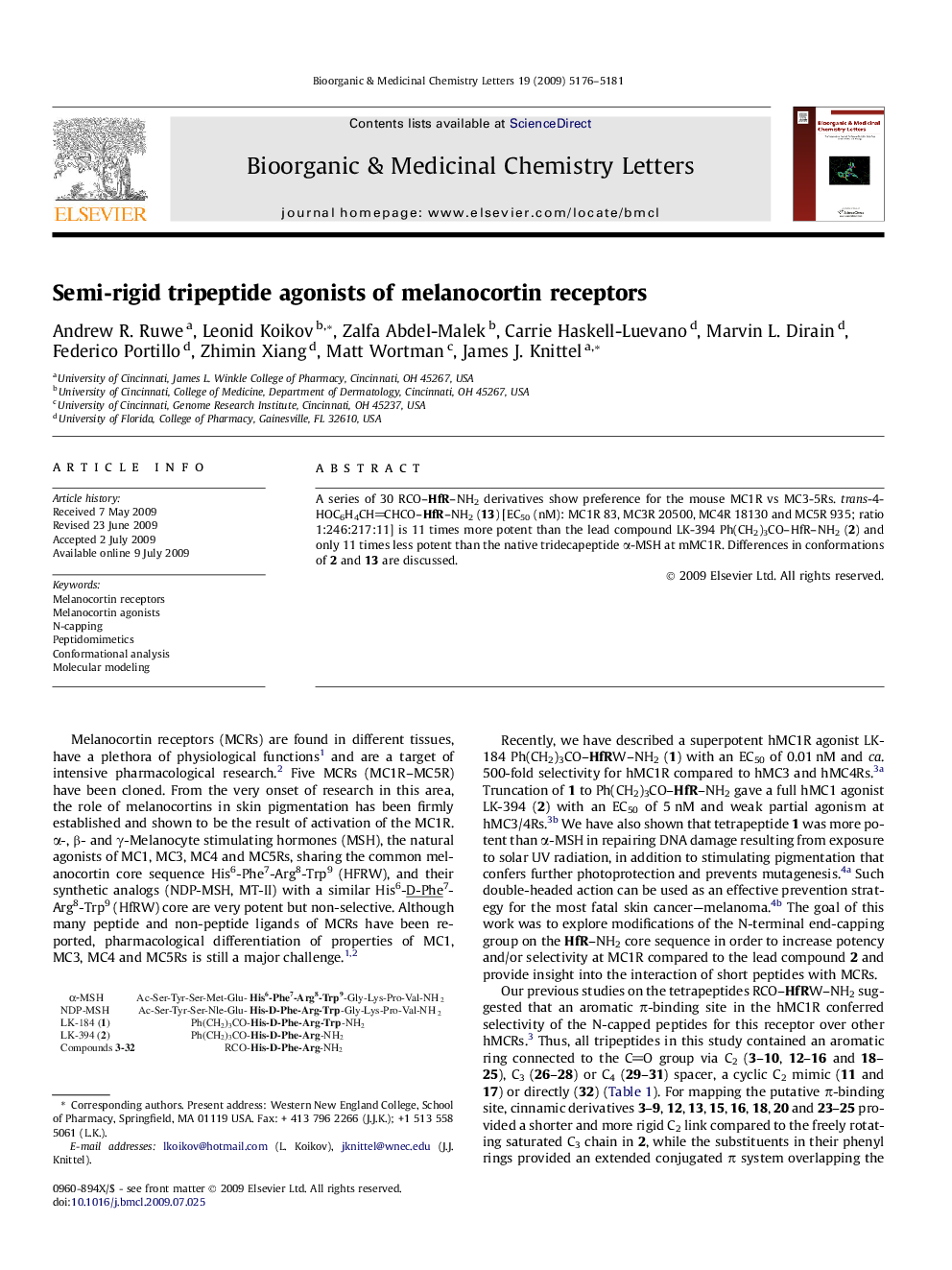| Article ID | Journal | Published Year | Pages | File Type |
|---|---|---|---|---|
| 1363730 | Bioorganic & Medicinal Chemistry Letters | 2009 | 6 Pages |
Abstract
A series of 30 RCO–HfR–NH2 derivatives show preference for the mouse MC1R vs MC3-5Rs. trans-4-HOC6H4CHCHCO–HfR–NH2 (13) [EC50 (nM): MC1R 83, MC3R 20500, MC4R 18130 and MC5R 935; ratio 1:246:217:11] is 11 times more potent than the lead compound LK-394 Ph(CH2)3CO–HfR–NH2 (2) and only 11 times less potent than the native tridecapeptide α-MSH at mMC1R. Differences in conformations of 2 and 13 are discussed.
Graphical abstractStructuring of the HfR–NH2 core by 4-HO-cinnamoyl led to 13 with better potency and selectivity at mMC1R than in unstructured prototype 2. Tripeptide 13 was only 11-fold less potent at mMC1R than the native tridecapeptide α-MSH (Ac-SYSMEHFRWGKPV-NH2).Figure optionsDownload full-size imageDownload as PowerPoint slide
Related Topics
Physical Sciences and Engineering
Chemistry
Organic Chemistry
Authors
Andrew R. Ruwe, Leonid Koikov, Zalfa Abdel-Malek, Carrie Haskell-Luevano, Marvin L. Dirain, Federico Portillo, Zhimin Xiang, Matt Wortman, James J. Knittel,
